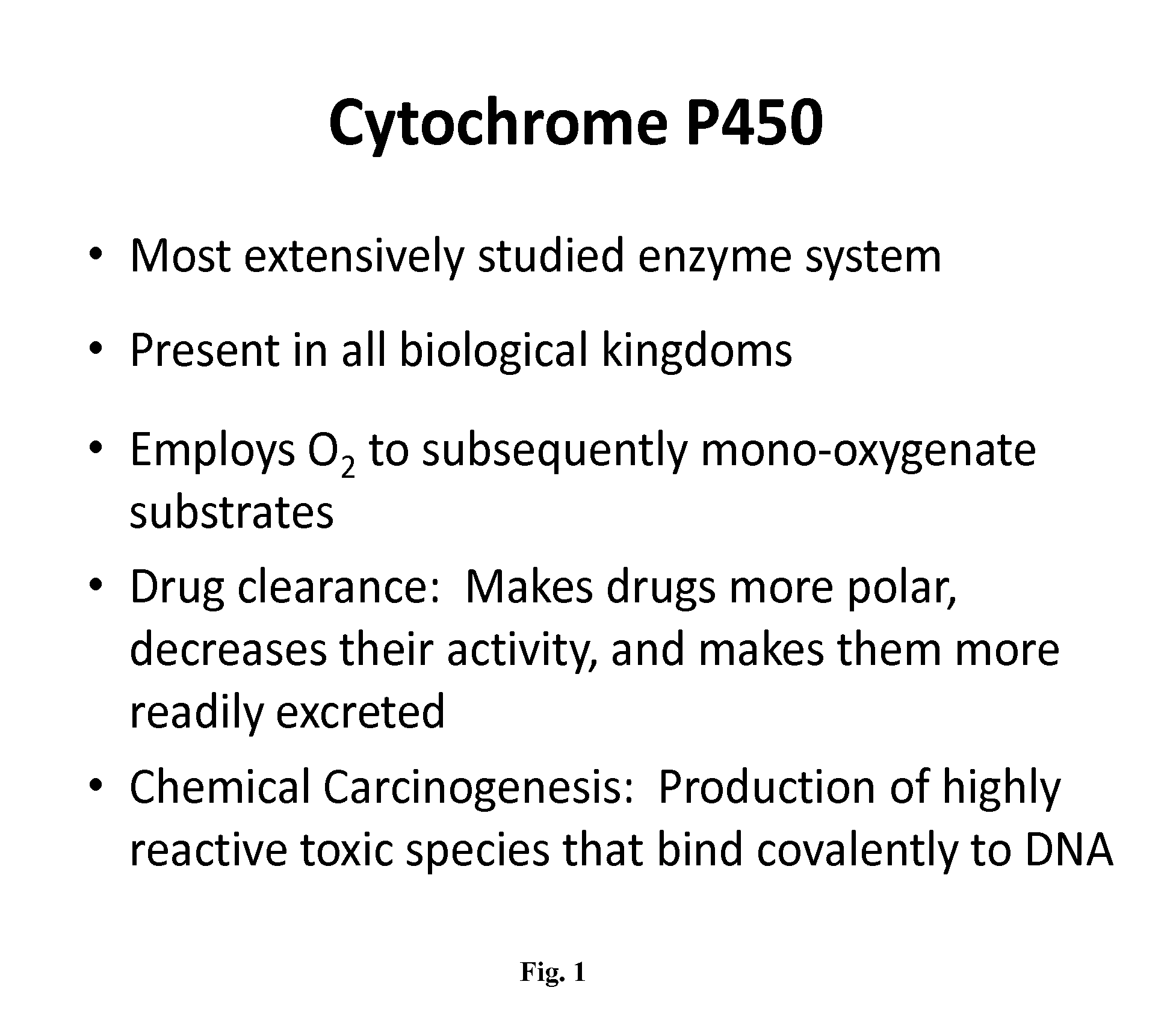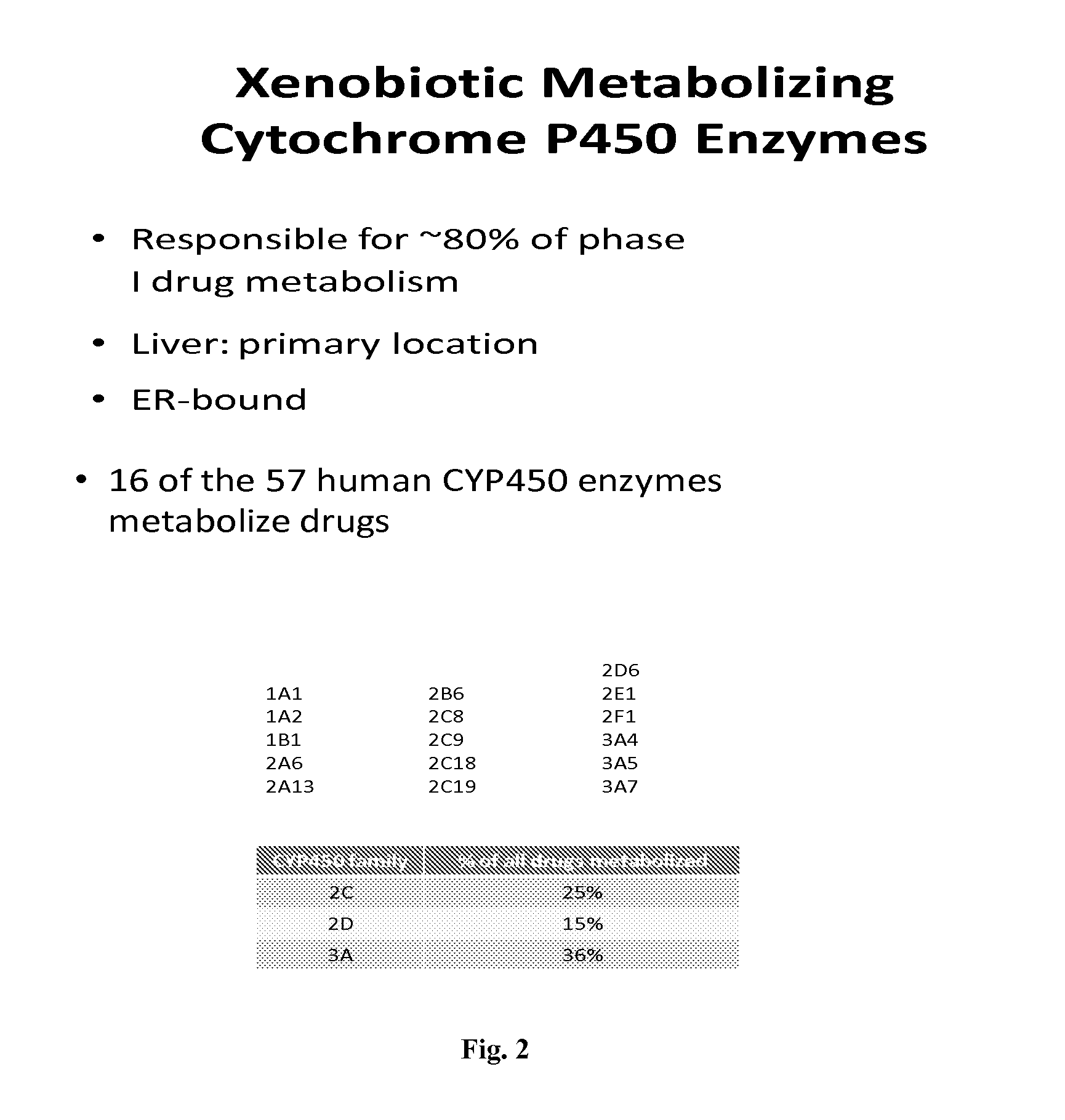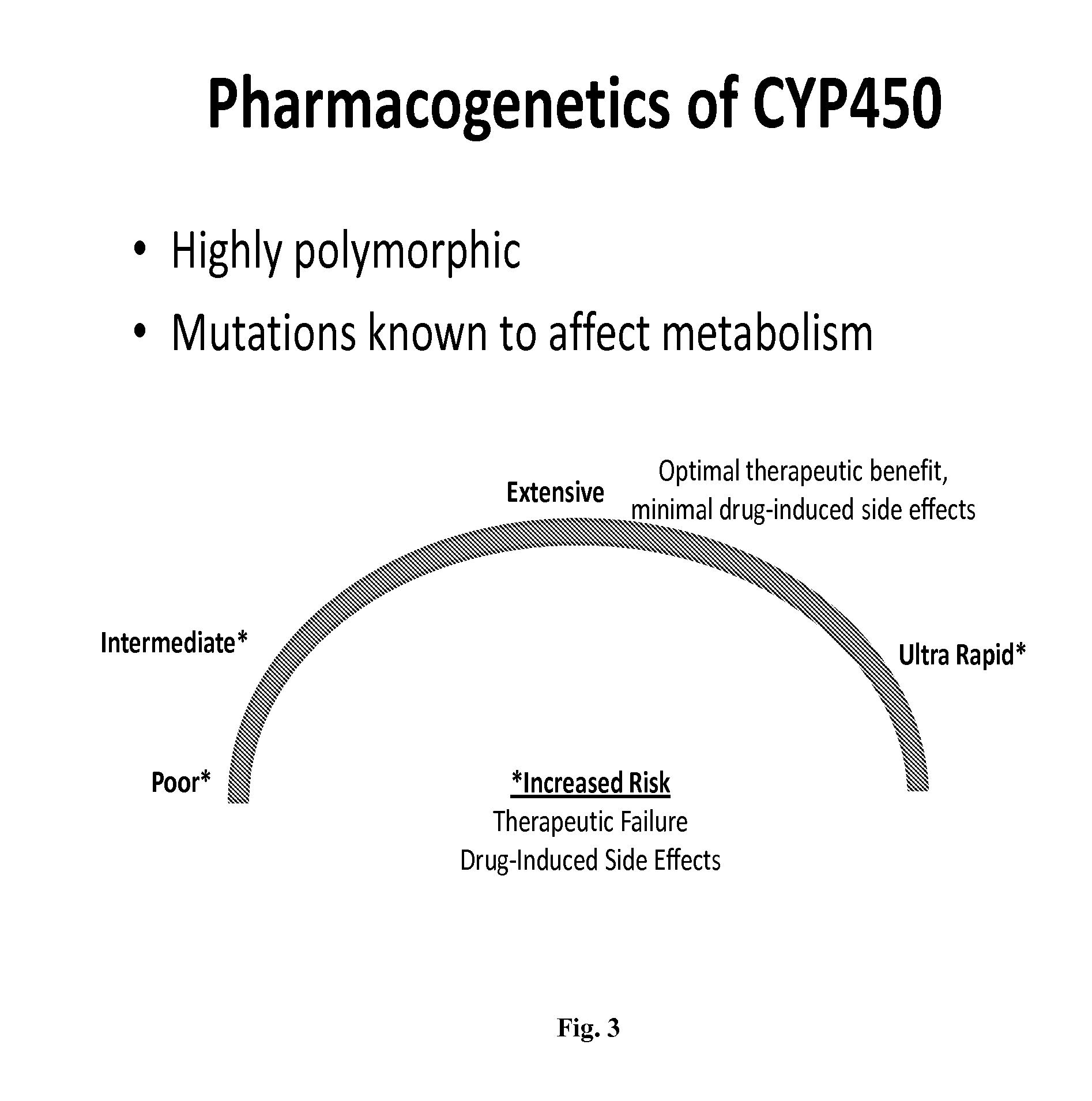Cell-Based Materials and Methods for Defining Pharmacogenetic Differences in Drug Metabolism
a cell-based material and drug metabolism technology, applied in biochemistry apparatus and processes, instruments, library screening, etc., can solve the problems of increasing the chance of death or cancer recurrence, drug toxicity for patients, and drug having little therapeutic effect on patients
- Summary
- Abstract
- Description
- Claims
- Application Information
AI Technical Summary
Benefits of technology
Problems solved by technology
Method used
Image
Examples
Embodiment Construction
[0025]Embodiments of the inventions relate to the characterization of cytochrome P450 polymorphisms to provide, for example, drug response predictions specific to an individual's genetic makeup.
[0026]Thus, cell lines that represent the range of polymorphisms using recombinant cytochrome P450 enzymes in a parent cell line that is minimally expressing or devoid of its own cytochrome P450 protein-of interest are described. These cells can then be placed into an array format that will enable high throughput screening of drug metabolism. Processing of the cells can be automated and drug metabolism could be determined using mass spectrometry (e.g., mass spectrometry with selected reaction monitoring (SRM)).
[0027]Embodiments of the invention involve screening the effects of cytochrome P450 polymorphisms on clinical drug metabolism in a high throughput manner for drug development and personalized diagnostics. For example, methods of the invention can be used for investigating the effects of...
PUM
| Property | Measurement | Unit |
|---|---|---|
| Level | aaaaa | aaaaa |
Abstract
Description
Claims
Application Information
 Login to View More
Login to View More - R&D
- Intellectual Property
- Life Sciences
- Materials
- Tech Scout
- Unparalleled Data Quality
- Higher Quality Content
- 60% Fewer Hallucinations
Browse by: Latest US Patents, China's latest patents, Technical Efficacy Thesaurus, Application Domain, Technology Topic, Popular Technical Reports.
© 2025 PatSnap. All rights reserved.Legal|Privacy policy|Modern Slavery Act Transparency Statement|Sitemap|About US| Contact US: help@patsnap.com



